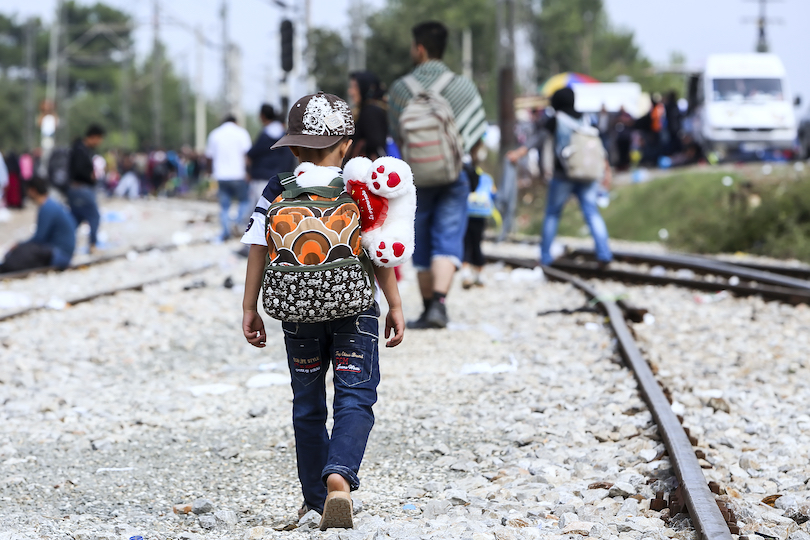In May 2025, Argentina enacted a sweeping immigration reform, aligning itself with a growing roster of nations—including the United States, Brazil, Canada, Australia, Germany, and Poland—that are tightening entry requirements and reshaping migration policies. This marks a significant departure from Argentina’s historically open immigration model, which long welcomed foreigners with minimal barriers. The new decree, effective as of May 10, 2025, introduces stringent residency criteria, expedited deportation protocols, and restricted access to public services for non-citizens. This article delves into the nuances of Argentina’s policy shift, explores its alignment with global trends, and examines the broader implications for migration, tourism, and regional dynamics in Latin America.
Argentina’s New Immigration Framework: A Detailed Breakdown
The executive decree reshaping Argentina’s immigration system is built on three core pillars: stricter residency requirements, accelerated deportation mechanisms, and limitations on public service access for foreigners. These changes reflect a broader global pivot toward securitized borders and selective immigration frameworks.
Stricter Residency Requirements
Under the new rules, prospective permanent residents must provide verified proof of income or sufficient financial resources to sustain themselves in Argentina. Additionally, applicants are required to submit a clean criminal record from their country of origin. For those seeking citizenship, the pathway now demands either two years of uninterrupted residency or a substantial financial investment, such as in real estate or business ventures.
Historically, Argentina’s residency process was notably lenient, with minimal income verification and broad eligibility for public services. This openness attracted retirees, students, and expatriates, particularly from neighboring countries. The new requirements, however, mirror those in countries like Australia and the United Kingdom, where financial self-sufficiency is a prerequisite for long-term residency.
“The shift to stricter residency criteria signals Argentina’s intent to prioritize economic contributors over casual migrants,” notes Dr. Maria Gonzalez, a migration policy expert at the University of Buenos Aires.
Expedited Deportation Protocols
The decree broadens the grounds for deportation, allowing authorities to expel foreigners for violations such as illegal entry, falsified documentation, or minor legal infractions. Previously, deportation was reserved for serious crimes carrying prison sentences of three years or more. The new policy eliminates this threshold, enabling swift removal for a wider range of offenses.
Judicial processes have also been streamlined, with immigration courts instructed to fast-track cases. While this aims to reduce backlog, critics argue it compromises due process, leaving migrants with limited time to secure legal representation. Similar systems are in place in the United States, where expedited removal procedures apply to undocumented entrants, and in Germany, where immigration appeals face tight deadlines.
Restricted Access to Public Services
Perhaps the most controversial aspect of the reform is the introduction of fees for non-residents accessing public healthcare and education. Argentina’s universal access model, which offered free healthcare and university education to all, was a hallmark of its progressive social policies. The new rules reserve free access for citizens and long-term permanent residents, requiring foreigners to pay for services.
This policy echoes measures in Canada, where temporary visa holders rely on private insurance, and the UK, where non-residents pay an Immigration Health Surcharge for National Health Service access. In Argentina, the shift is expected to impact foreign students, retirees, and long-term travelers who once benefited from cost-free services.
Global Context: A Wave of Restrictive Immigration Policies
Argentina’s reforms are not an isolated phenomenon but part of a global trend toward tighter immigration controls. Economic pressures, security concerns, and domestic political dynamics have driven countries across continents to adopt similar measures.
United States: The Public Charge Doctrine
The U.S. has long enforced a “public charge” rule, requiring visa applicants to demonstrate financial independence or secure affidavits of support from sponsors. Expedited deportations are common for undocumented entrants or those violating visa terms. Access to subsidized services, such as Medicaid, is heavily restricted for non-citizens, reflecting a policy of prioritizing national resources for citizens.
Canada: Financial Thresholds and Limited Access
Canada’s Express Entry system demands proof of financial stability for permanent residency applicants. Temporary visa holders, such as international students, often face restricted access to subsidized healthcare and must purchase private insurance. These policies balance Canada’s openness to skilled migrants with safeguards for public services.
Australia: Character Tests and Health Cover
Australia requires all visa applicants to demonstrate financial capacity and pass a character test, which can lead to deportation for criminal or immigration violations. Non-residents must hold Overseas Visitor Health Cover (OVHC) to access healthcare, ensuring that public systems are not overburdened by temporary visitors.
Germany and Poland: European Trends
In Germany, long-term residency requires financial self-sufficiency and a clean criminal record. Access to public healthcare is limited for short-term residents, who must secure private insurance. Poland, responding to migration pressures from Eastern Europe, has tightened border controls and residency criteria, aligning with broader EU trends toward selective immigration.
Brazil: Transit Visa Crackdowns
Brazil recently introduced transit visa requirements for passengers using the country as a hub to reach the U.S., targeting migrants exploiting humanitarian loopholes. At the same time, Brazil has expanded legal residency pathways for foreign graduates to address labor shortages, demonstrating a dual approach of control and opportunity.
Mexico: Border Infrastructure and Digital Tools
Mexico has bolstered its border infrastructure with temporary shelters in cities like Ciudad Juárez to manage deportations from the U.S. The country is also developing a mobile app with a “panic button” for detained citizens to alert consulates, reflecting a proactive response to the humanitarian challenges of mass deportations.
These examples illustrate a global shift toward immigration systems that emphasize economic contribution, legal compliance, and restricted access to public resources. Argentina’s alignment with these policies underscores its integration into this international movement.
Hidden Truths: The Drivers Behind Argentina’s Policy Shift
While the Argentine government frames its reforms as necessary for national sustainability, several underlying factors suggest a more complex motivationscape.
Economic Pressures and Public Service Strain
Argentina’s economy has faced chronic challenges, including high inflation and currency devaluation. The 2022 census reported a population of 46 million, with only 1.93 million foreign-born residents—a modest 4.2% of the total. Despite this low share, public discourse often exaggerates the strain of immigration on healthcare and education systems.
Research from the International Organization for Migration (IOM) indicates that migrants contribute significantly to Argentina’s economy, particularly in sectors like construction and agriculture. However, economic downturns amplify perceptions of resource scarcity, fueling support for restrictive policies.
Political Strategy and Electoral Timing
The timing of the decree, just months before national elections, suggests a political calculus. Immigration has become a salient issue globally, often leveraged to consolidate conservative voter bases. By framing foreigners as a burden, the government may be appealing to nationalist sentiments, a tactic observed in countries like the U.S. and Germany during election cycles.
“Immigration reforms are as much about optics as they are about policy,” says political analyst Juan Perez. “In Argentina, the government is signaling control and sovereignty to a electorate wary of economic instability.”
Regional Dynamics and Migration Flows
Latin America has historically featured fluid migration channels, but recent crises in countries like Venezuela and Haiti have increased regional migration pressures. Argentina’s reforms may be a preemptive response to potential inflows, particularly as neighboring Chile and Peru have also tightened border controls.
Impact on Tourism and International Perception
Argentina’s tourism sector, a key economic driver, may face challenges due to these reforms. The country’s attractions—Patagonia’s glaciers, Mendoza’s vineyards, and Buenos Aires’ cultural vibrancy—have long drawn millions of visitors annually. However, the new rules could deter long-term travelers, students, and retirees.
Shifting Traveler Demographics
Foreign students, who benefited from free university education, may reconsider Argentina in favor of destinations like Uruguay, which maintains more open policies. Similarly, retirees drawn to Argentina’s low cost of living may find the new healthcare fees and residency hurdles prohibitive.
Competitiveness in the Region
Neighboring countries like Chile and Uruguay, with less restrictive immigration frameworks, could gain a competitive edge in attracting expatriates and long-term visitors. Tourism operators in Argentina may need to adjust marketing strategies to emphasize short-term travel rather than extended stays.
Regional Ripple Effects: Latin America’s Policy Evolution
Argentina’s reforms could catalyze a broader shift in Latin American immigration policies. The region has traditionally prioritized open borders, but economic challenges and migration pressures are prompting change.
Chile and Peru: Early Adopters
Chile has introduced visa requirements for Venezuelan migrants, while Peru has tightened border controls to manage inflows from crisis-hit neighbors. Argentina’s high-profile reforms may encourage other countries to follow suit, particularly if public approval is evident.
Potential for Regional Coordination
There is potential for Latin American nations to coordinate immigration policies, creating a regional framework that balances humanitarian obligations with national interests. Such coordination could involve shared border management or standardized residency criteria, though political differences may pose challenges.
Ethical and Humanitarian Considerations
The reforms raise significant ethical questions, particularly regarding due process and access to essential services. Expedited deportations risk violating migrants’ rights to fair hearings, while service fees could exacerbate vulnerabilities among low-income foreigners.
Human rights organizations, such as Amnesty International, have criticized the policies, arguing that they disproportionately affect marginalized groups. The IOM has called for balanced reforms that preserve Argentina’s humanitarian legacy while addressing economic concerns.
Long-Term Implications: A New Migration Paradigm
Argentina’s immigration overhaul signals a new era of controlled entry and conditional access. By prioritizing financial solvency and legal compliance, the country is adopting a transactional migration model, aligning with global trends toward protectionism.
Balancing Openness and Control
The challenge for Argentina will be to balance its restrictive policies with its reputation for hospitality and global connectivity. Excessive barriers could alienate potential migrants and visitors, undermining economic and cultural contributions.
Global Norms and Mobility
The global shift toward selective immigration raises broader questions about the future of international mobility. As nations prioritize national interests, the principles of universal access and free movement may face increasing scrutiny.
Conclusion: Navigating a Changing Landscape
Argentina’s entry into the global wave of immigration reform reflects a complex interplay of economic, political, and regional factors. By introducing stricter residency requirements, expedited deportations, and service restrictions, the country is aligning with policies in the U.S., Brazil, Canada, Australia, Germany, and Poland. While these measures aim to safeguard national resources, they risk reshaping Argentina’s image as an open and welcoming destination.
For travelers, students, and migrants, the new rules underscore the importance of staying informed and prepared. As the landscape of international mobility evolves, Argentina stands at a crossroads, balancing its historical legacy with the demands of a protectionist world.




























0 Comments